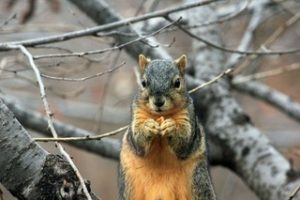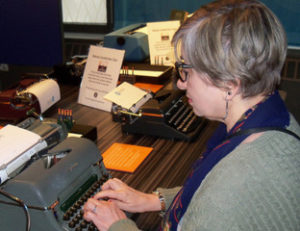 Fairy tales have been around in one form or another for centuries, even if they weren’t written down and compiled into collections like Grimm’s Fairy Tales. They’ve changed over the centuries as well, shifting from folk stories to morality tales to more sanitized or “Disney-fied” versions of what they once were. In the process of this sanitization, oftentimes the messages the fairy tales purported to dictate have changed. Gone is the Little Mermaid who watched her beloved marry someone else, at which point she cast herself back into the ocean and drowned, showing us that you shouldn’t change for someone you love. Instead, we get the version where the mermaid and prince live happily ever after, flipping the moral to be that you can (and should?) change in order to make someone love you.
Fairy tales have been around in one form or another for centuries, even if they weren’t written down and compiled into collections like Grimm’s Fairy Tales. They’ve changed over the centuries as well, shifting from folk stories to morality tales to more sanitized or “Disney-fied” versions of what they once were. In the process of this sanitization, oftentimes the messages the fairy tales purported to dictate have changed. Gone is the Little Mermaid who watched her beloved marry someone else, at which point she cast herself back into the ocean and drowned, showing us that you shouldn’t change for someone you love. Instead, we get the version where the mermaid and prince live happily ever after, flipping the moral to be that you can (and should?) change in order to make someone love you.
“Original” versions of fairy tales can be a loaded term, in that most of the fairy tales we know today existed in an oral format prior to being written down. When the stories were written down, they were not always faithful to the original tellings. Charles Perrault’s versions of fairy tales were reworked so they would be popular amongst the seventeenth-century French aristocracy. In the nineteenth century, the Grimm brothers, in the first versions of their compilations of fairy tales, acted primarily as transcriptionists, interested in recording the stories as they were commonly told among the German populace. In later versions of the Grimm brothers’ collections, however, they began the sanitization process, making the tales more family friendly.
 There is no denying that many of the “original” fairy tales were violent, sexist, and gruesome. They’re filled with death, abuse, self-mutilation, and more. Some of these tales were likely used by the tellers to imbue the listeners (or readers) with specific moral values or lessons or warn them against things like going into the woods alone at night or engaging in other dangerous activities. Perrault and the Grimm brothers also added to these moral lessons but shaped them to their own times and audiences. For example, stories that originally included birth mothers often were changed to instead include stepmothers, who were invariably vain, evil, and not interested in the welfare of their young charges. That the “original” stories ascribed these same motives to birth mothers is a fascinating bit of historical curiosity, but that stepmothers were so much more readily demonized might be even more intriguing as an avenue of study.
There is no denying that many of the “original” fairy tales were violent, sexist, and gruesome. They’re filled with death, abuse, self-mutilation, and more. Some of these tales were likely used by the tellers to imbue the listeners (or readers) with specific moral values or lessons or warn them against things like going into the woods alone at night or engaging in other dangerous activities. Perrault and the Grimm brothers also added to these moral lessons but shaped them to their own times and audiences. For example, stories that originally included birth mothers often were changed to instead include stepmothers, who were invariably vain, evil, and not interested in the welfare of their young charges. That the “original” stories ascribed these same motives to birth mothers is a fascinating bit of historical curiosity, but that stepmothers were so much more readily demonized might be even more intriguing as an avenue of study.
Beyond even the changes that Perrault and the Grimm brothers made to the “original” fairy tales, modern sensibilities have again shifted the telling of these stories, cleaned them up further, and completely rewritten them into things that barely resembles the “originals”. Like the Little Mermaid example above, the retelling of fairy tales as children’s movies, often animated and turned into musicals, can obliterate the original meaning, though not always for the worse. The “original” Beauty and the Beast story from seventeenth-century France was written to prepare young girls for arranged marriages, and had an emphasis on learning to love someone you didn’t know, whereas the Disney version of Beauty and the Beast involves character growth for both Belle and the Beast, who learn to love each other, rather than simply expecting the woman to do all the work. This example, in particular, also reflects the time in which it was turned into a movie, considerably different from earlier Disney films in which the female protagonists sometimes were denied the agency that Belle is permitted. Other retellings of fairy tales have stripped away the morality entirely, or occasionally taken a story that was more about avoiding dangerous activities, in a way that did not really require a moral, and added a moral in for good measure (like various versions of Little Red Riding Hood).
Though the origins of many fairy tales are lost to history, the ability to compare various versions of tales as they have been told over the centuries is a fascinating endeavor, both for what they tell us about broadly defined history and what they tell us about storytelling and writing in various times.
 About the author: Dawn Vogel’s academic background is in history, so it’s not surprising that much of her fiction is set in earlier times. By day, she edits reports for historians and archaeologists. In her alleged spare time, she runs a craft business, co-edits Mad Scientist Journal, and tries to find time for writing. She is a member of Broad Universe, SFWA, and Codex Writers. She lives in Seattle with her husband, author Jeremy Zimmerman, and their herd of cats. Visit her at http://historythatneverwas.com or follow her on Twitter @historyneverwas. Dawn’s latest book is The Cask of Cranglimmering, Book One of Brass and Glass.
About the author: Dawn Vogel’s academic background is in history, so it’s not surprising that much of her fiction is set in earlier times. By day, she edits reports for historians and archaeologists. In her alleged spare time, she runs a craft business, co-edits Mad Scientist Journal, and tries to find time for writing. She is a member of Broad Universe, SFWA, and Codex Writers. She lives in Seattle with her husband, author Jeremy Zimmerman, and their herd of cats. Visit her at http://historythatneverwas.com or follow her on Twitter @historyneverwas. Dawn’s latest book is The Cask of Cranglimmering, Book One of Brass and Glass.








